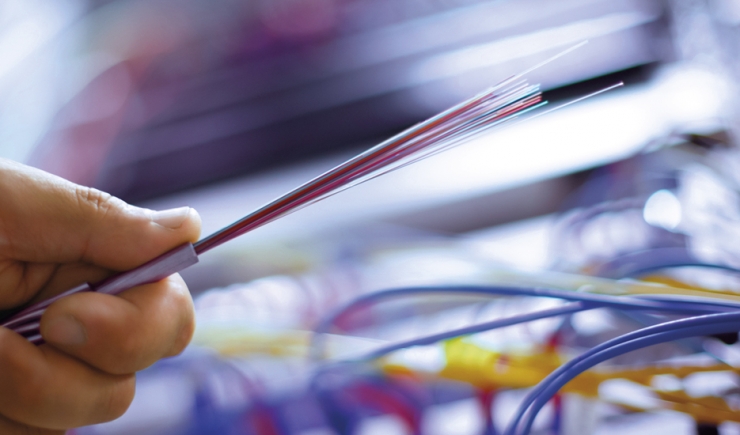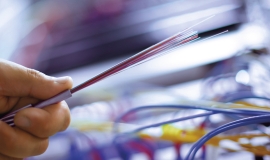
In support of the Metropolitan Master Plan for Digital Development in the Métropole du Grand Paris, and complementary to the first study carried out in 2017, Apur proposes an urban reading of the deployment of fibre-optics on a metropolitan scale. Although equal access to digital tools and services, digital inclusion, is currently an issue of major concern, one should not forget the objective which already exists, of having equal network access throughout the region, that is 100% fibre-optic, by 2022.
On a regional and national level, the Métropole du Grand Paris (MGP) appears to be privileged with 4G mobile coverage and ultra-fast broadband internet connection. Nevertheless, certain territories, mainly in the east of the metropolis, suffer from a significant delay in fibre-optic coverage threatening sometimes to add a digital divide to an already existing social divide. This “digital disconnection” could have a negative impact on inhabitants, businesses, land value and the overall attractiveness of the whole metropolis.
Since December 2018, new data on fibre-optic deployment for the general public has been made available every three months by Arcep (Regulatory Authority for Electronic Communication and Postal Services) in the context of the Observatory of broadband and ultra-fast broadband. They describe, on the scale of buildings, the availability of fibre-optic networks for the general public, whether they be installed or planned by infrastructure operators.
By cross referencing these data with urban data, Apur proposes a method for monitoring deployment using different focal points such as multi-dwelling buildings, individual housing areas and social housing as well as small and medium sized businesses, for whom the fibre-optic deployment destined for the general public can be an alternative to fibre access provided for businesses, which is of a higher quality but also more expensive. Particular attention is given to sectors of social and urban significance, like neighbourhoods included in the City’s Urban Cohesion Policy and zones of activity affected by the Local Urbanism Plan, where fibre-optics could also be a lever of transformation. Maps are included to illustrate the analysis.
These simplified indicators were calculated using the deployment data of the 4th quarter of 2018, and could be regularly updated, each year for example.
Thematic focus
Collective housing
90% of housing in the MGP is located in multi-dwelling buildings. A large proportion of these housing units are connectable (75% compared with the overall average of 73%), however a volume of over 800,000 housing units are not yet connected. 48% of these are included in connecting projects while 52% are located on land plots where there was apparently no connection planned by operators at the end of 2018. Remedial action is underway principally in the eastern territories of MGP, which has less fibre-optic solutions than the west.
Individual housing areas
With nearly 400,000 housing units, the individual house, residential areas represent 10% of the MGP housing stock. At the end of 2018 it was characterised by a considerable delay in deployment (56% houses connected) but like collective housing, one can see a movement to catch-up in eastern territories. 12% of housing units with no plan for connection are in individual housing areas, 35% of these are located in Est Ensemble and Paris Terres d’Envol.
Social housing
The Métropole du Grand Paris has nearly 870,000 social housing units, 28% of which are within Paris. Fibre-optic deployment for the general public in these homes has now been brought into line with other housing. However there are still 237,000 non-connected social housing units.
Housing in neighbourhoods effected by the City’s Urban Cohesion Policy (QPV)
The 158 neighbourhoods of the City’s Urban Cohesion Policy (QPV) house 1.1 million inhabitants, that is approximately 15% of the metropolitan population. This represents 430,000 housing units, that is 12% of housing in MGP. Over 50% of QPV housing is located in Plaine Commune, Paris Terre d’Envol and Est Ensemble. They show a general fibre-optic connection delay with 56% connectable in the 4th quarter of 2018.
Very Small Businesses (TPE) and Small and Medium Businesses (PME)
At the end of 2018, 69% TPE-PME in the Métropole appeared to be connectable to the general public fibre-optic network. This figure fell to 28% when they were located in the PLU business zone (6% of TPE-PME in MGP). It was 43% in City Policy neighbourhoods (6% of TPE-PME in MGP) and 38% in the peripheral business territories (1.3% TPE-PME in MGP).
Access to the study
Press contact :
Quentin Treton : email – 01 83 97 63 59

